It’s been nearly 250 years since we Americans separated from our cousins across the pond, but no matter how many centuries have passed, we are still captivated by the British Royal Family’s weddings and funerals. And so it was this year, when we witnessed the ancient and solemn funeral of Britain’s longest reigning monarch.
As we close out this year, it’s worthwhile to consider the passing of this remarkable woman and what her life signified.
Unlike her great-great-grandmother Queen Victoria and great-grandfather King Edward VII, Queen Elizabeth II did not give her name to her era. The Victorian and Edwardian eras were so named because Britain was at the height of its power during those reigns. At the turn of the last century, the British Empire was the largest the world had ever seen, encompassing nearly a quarter of the earth’s land mass and 23 percent of the world’s population. But by the time Elizabeth II was crowned in 1953, that empire, upon which the sun had never set, was already in its twilight. Britain is a respected regional power today, but no longer a world power. And yet, the news of the Queen’s passing dominated the front pages of every newspaper in the world. And a week later, the whole world tuned in to witness her funeral. By some estimates, it may have been the most watched television event in history.
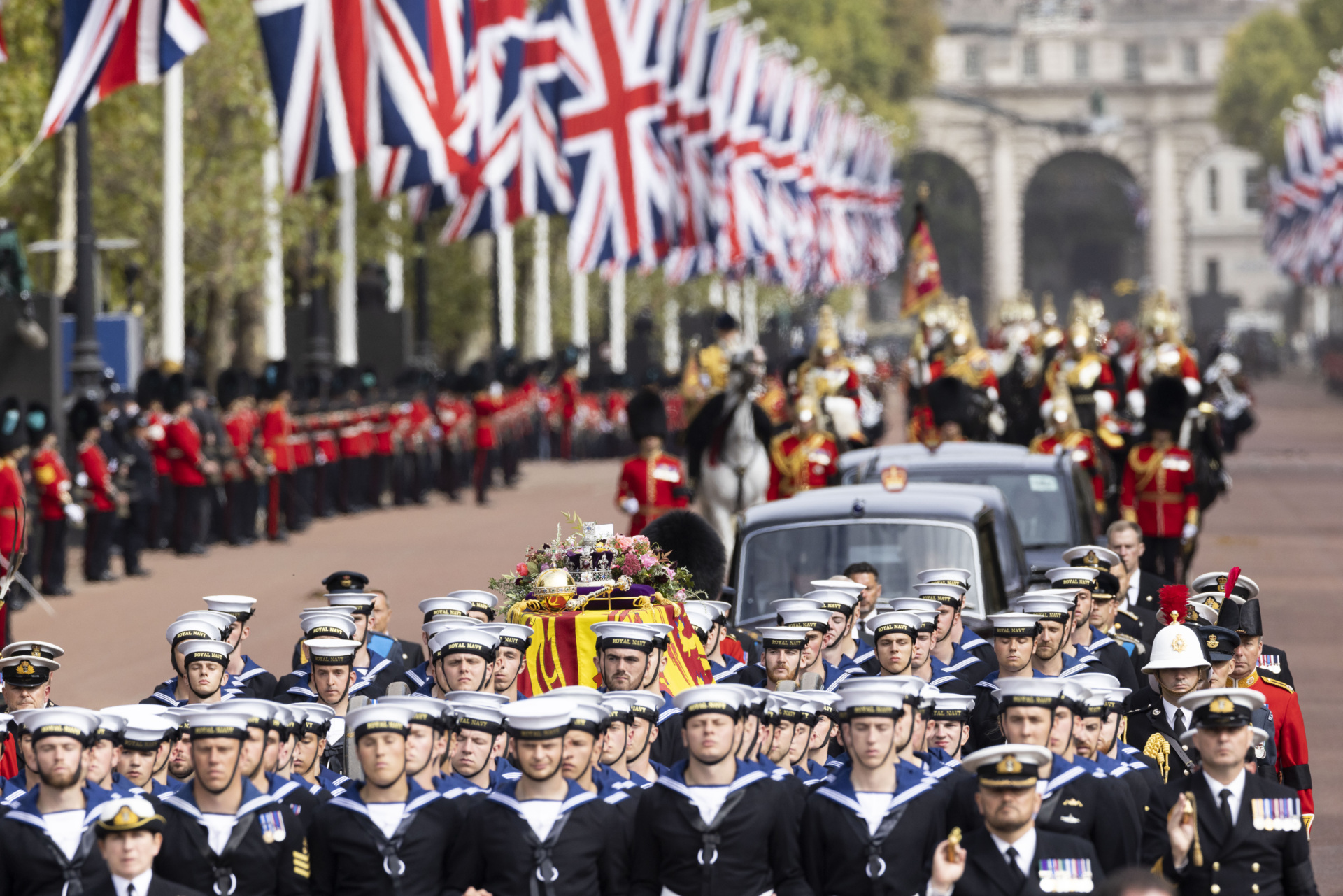
The State Gun Carriage bears the coffin of Queen Elizabeth II as it’s pulled by Royal Navy Sailors. (Graeme Robertson/Getty Images)

The coffin of Queen Elizabeth II with the Imperial State Crown resting on top. (Chip Somodevilla/Getty Images)

The Queen’s funeral cortege borne on the State Gun Carriage of the Royal Navy travels along The Mall. (Dan Kitwood/Getty Images)
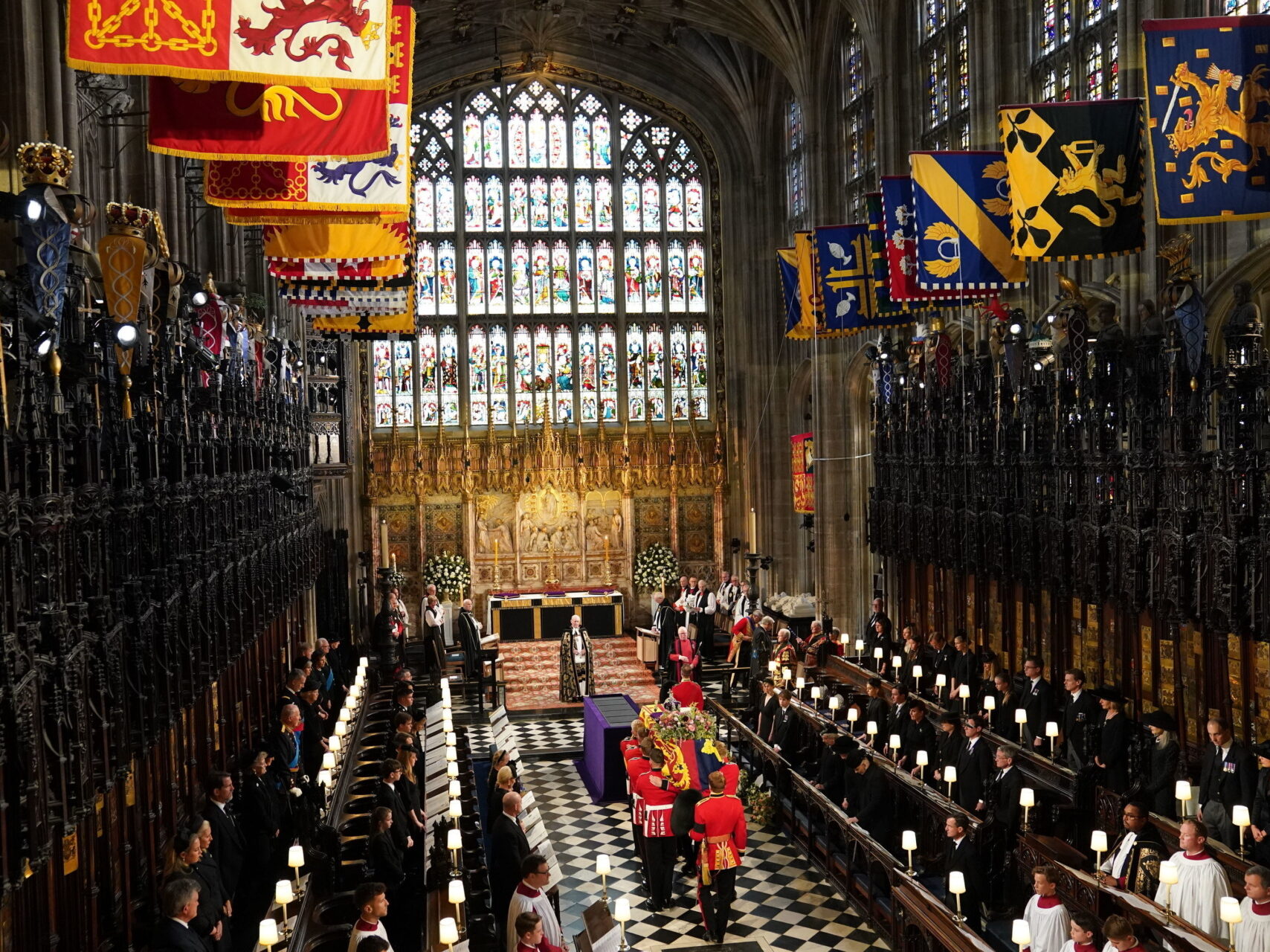
The coffin of Queen Elizabeth II is carried into St. George’s Chapel at Windsor Castle for her Committal Service. (Joe Giddens/AP)
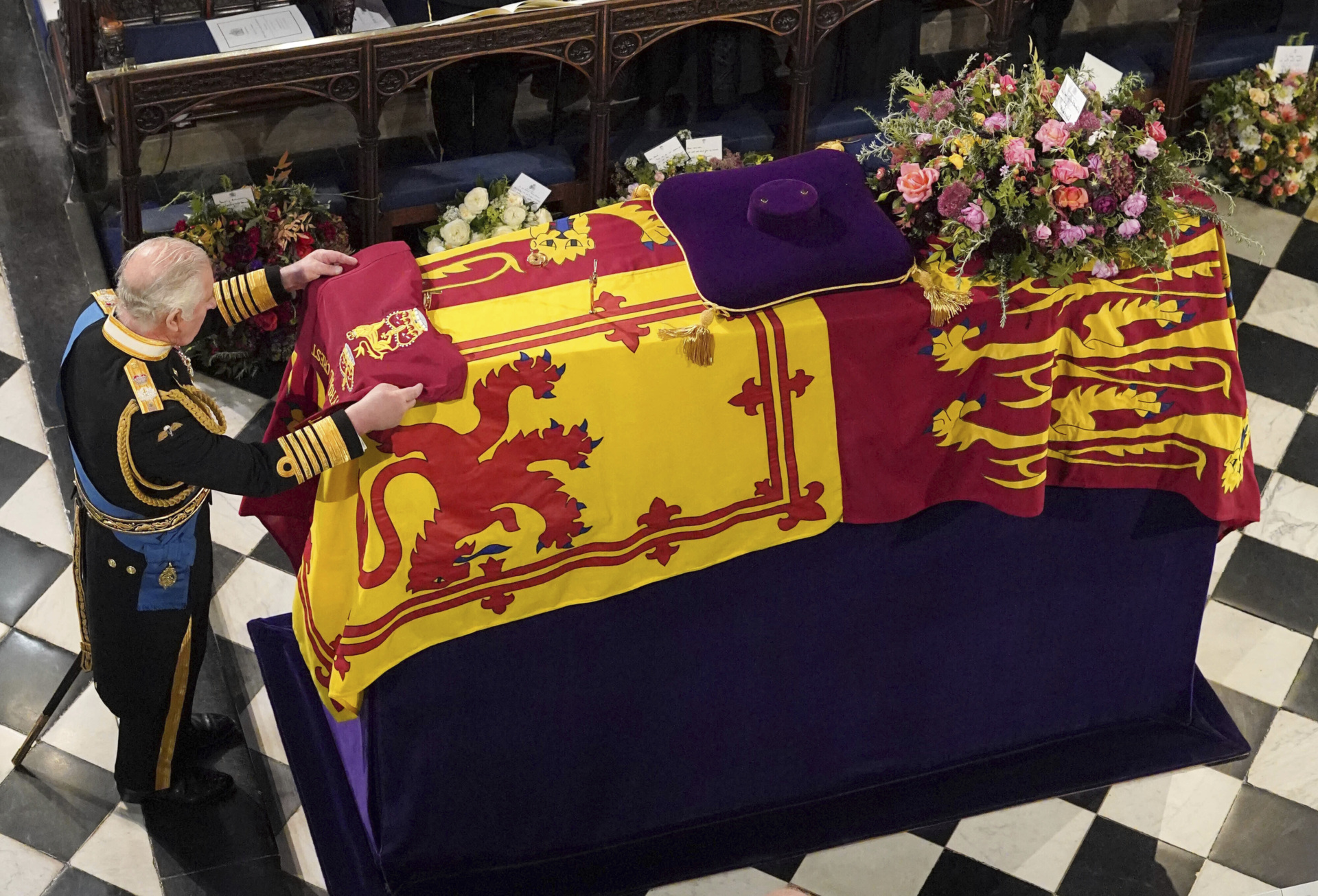
King Charles III places the Queen’s Company Camp Colour of the Grenadier Guards on Queen Elizabeth II’s coffin before her burial in St. George’s Chapel. (Jonathan Brady/AP)
Why did so many people around the world watch her funeral?
Partly it was out of respect for her country. Elizabeth II was the living embodiment of Britain, its values, and its long history. “When she entered the room, Britain entered the room. Majesty entered, something old and hallowed and rich in meaning, something going back to tribes that painted themselves blue and forward to the Magna Carta,” as the Wall Street Journal’s Peggy Noonan put it. We got a glimpse of that history when she was laid to rest in St. George’s Chapel at Windsor Castle with its banners and coats of arms of all the Garter Knights (save for the disgraced ones) stretching back to Edward the Black Prince.
We also watched out of respect for her as the last world leader of the greatest generation who, in her own words, came of age “in the terrible and glorious years of the Second World War.” Hers was a generation that understood sacrifice for king and country in a way we can hardly fathom today. They served and sacrificed without complaint because, in her words, “service demands sacrifice.” Their most patriotic songs were actual hymns vowing “the love that makes undaunted the final sacrifice.” And the Queen learned what that meant from her own much-loved father, George VI, who gave every ounce of his strength in service to his country during World War II until his own health broke under the stress of it. “He literally died for England,” one of his courtiers said.
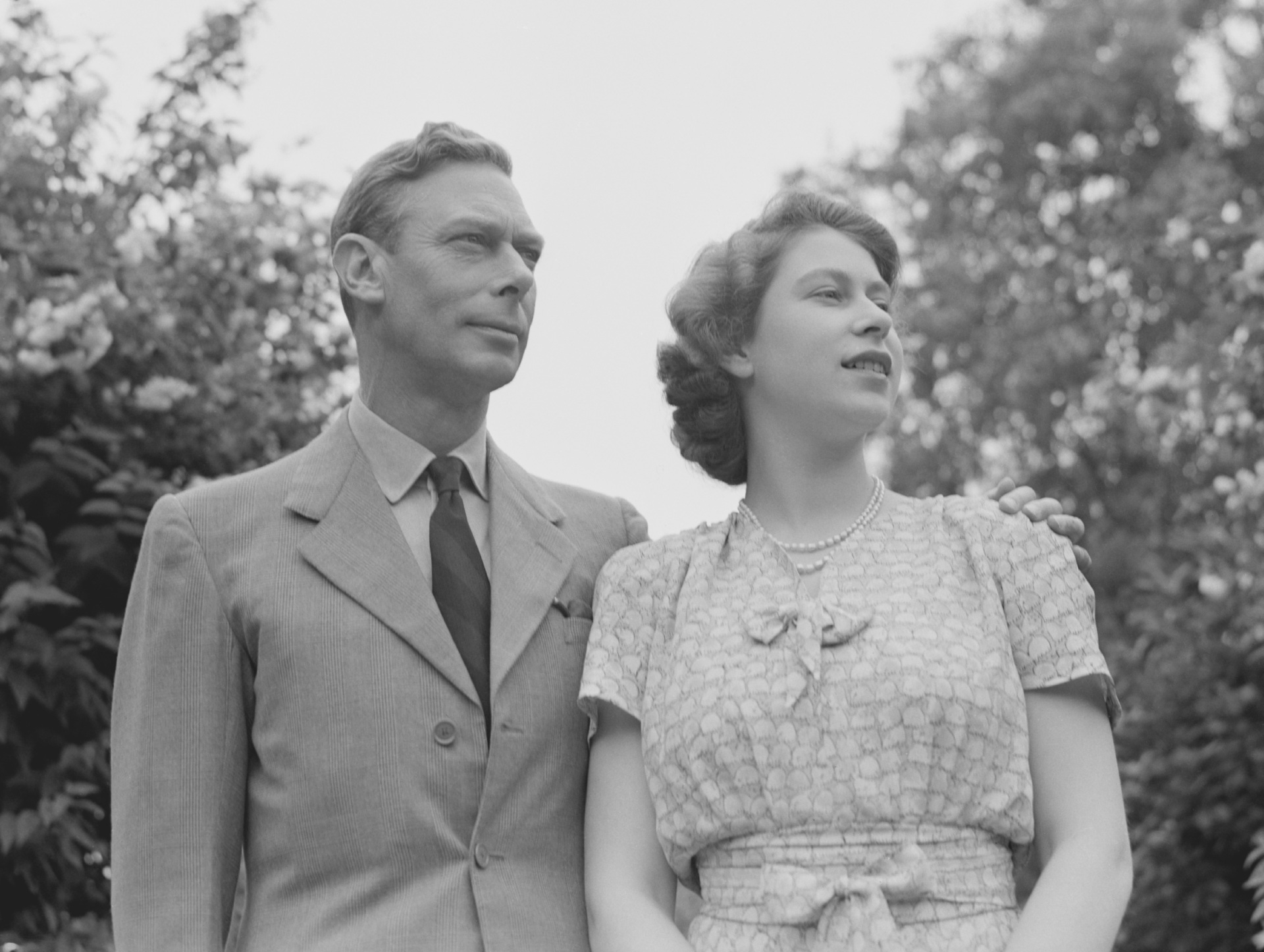
King George VI and Princess Elizabeth in the gardens at Windsor Castle on July 8, 1946. (Lisa Sheridan/Studio Lisa/Hulton Archive/Getty Images)
The world also watched out of respect for Elizabeth II’s steadfast sense of duty. Her famous promise in a 1947 radio broadcast, when she was still a princess, to serve her people “my whole life, whether it be long or short” was fulfilled right to the end when she met with her last prime minister—her fifteenth since her first, Winston Churchill—just days before she died.
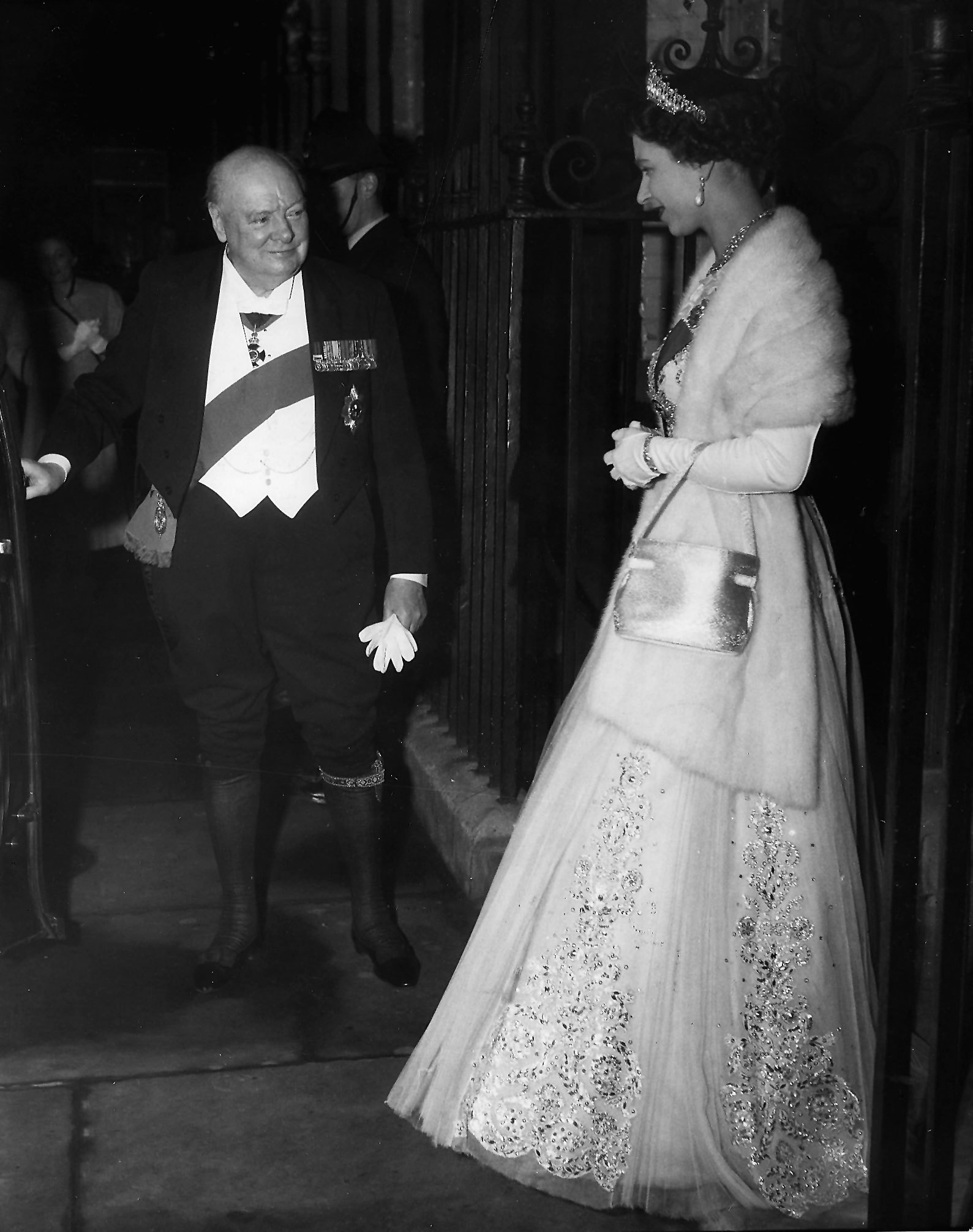
Winston Churchill escorts Queen Elizabeth to her car after dining at No. 10 Downing Street in April 1955. (Daily Mirror/Mirrorpix via Getty Images)
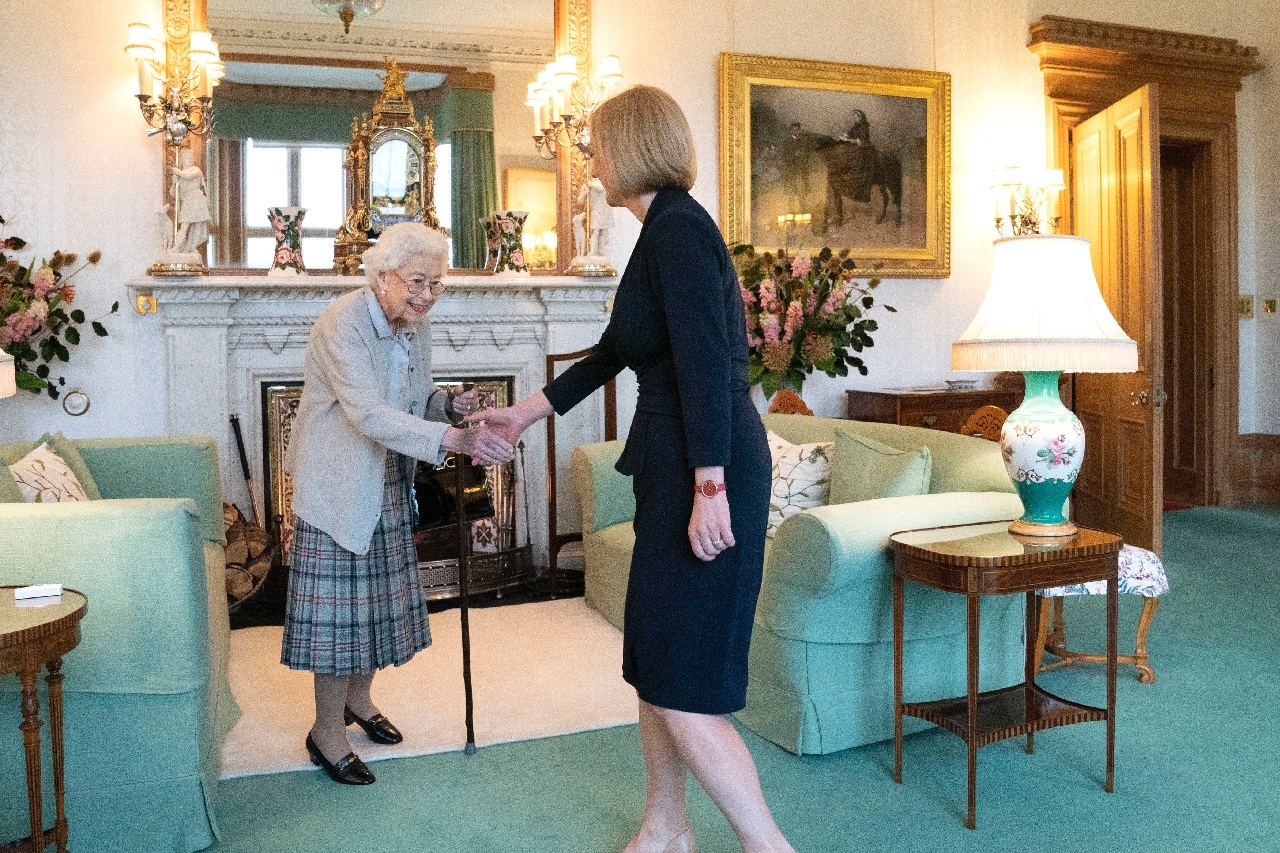
Queen Elizabeth II greets Britain’s Prime Minister-elect Liz Truss meet at Balmoral Castle, Scotland, on September 6, 2022. (JANE BARLOW/Getty Images)
Unlike Victoria and Edward VII, who were executive monarchs, Elizabeth II was a constitutional monarch. She had less power than her predecessors, but she used what power she had wisely and judiciously to steer her country and the world. Consider, for example, the key role she played in getting her government to impose sanctions on South Africa to end apartheid; or the soft diplomacy of her historic visit to Ireland in 2011, which helped heal centuries-old wounds. And most significantly, consider her tireless commitment to the Commonwealth as “a free and voluntary association of equal partners” comprised of the former dominions of the British Empire. At the start of her reign, there were only eight members of the Commonwealth; now there are 56—including some countries that were never historically part of the British Empire. And I expect that future historians will come to appreciate the role her subtle diplomacy played in helping the United States and Great Britain win the Cold War.
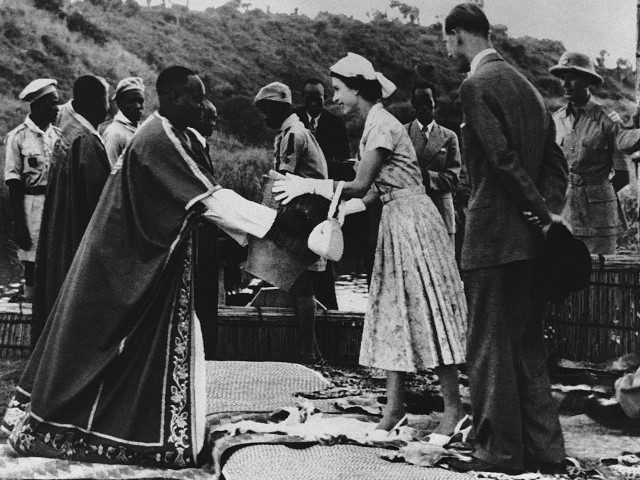
Queen Elizabeth II with the Duke of Edinburgh on a Royal visit to the then colony of Uganda in 1954. (AP Photo)
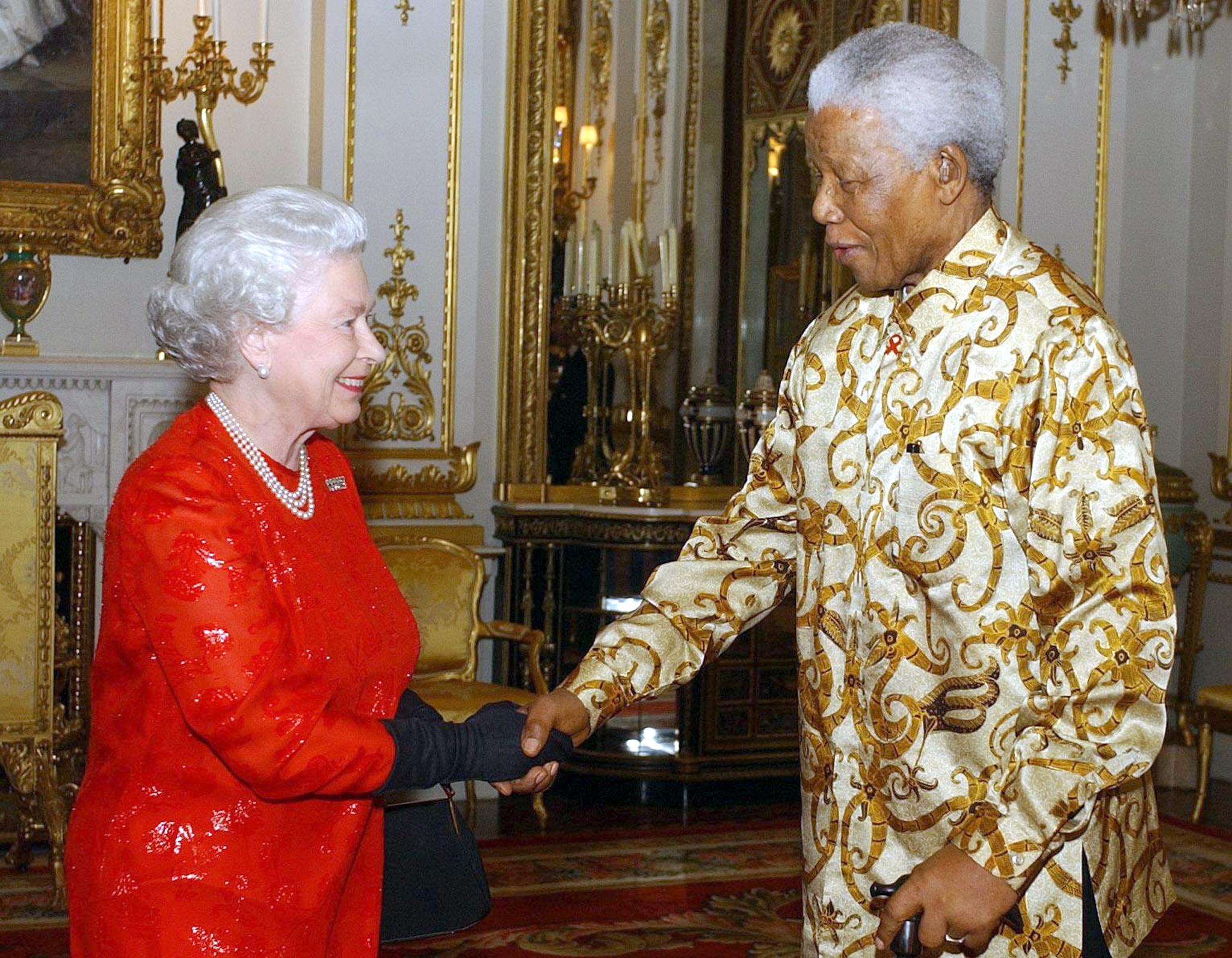
Queen Elizabeth II meets with former South African President Nelson Mandela at Buckingham Palace on October 20, 2003. (KIRSTY WIGGLESWORTH/Getty Images)
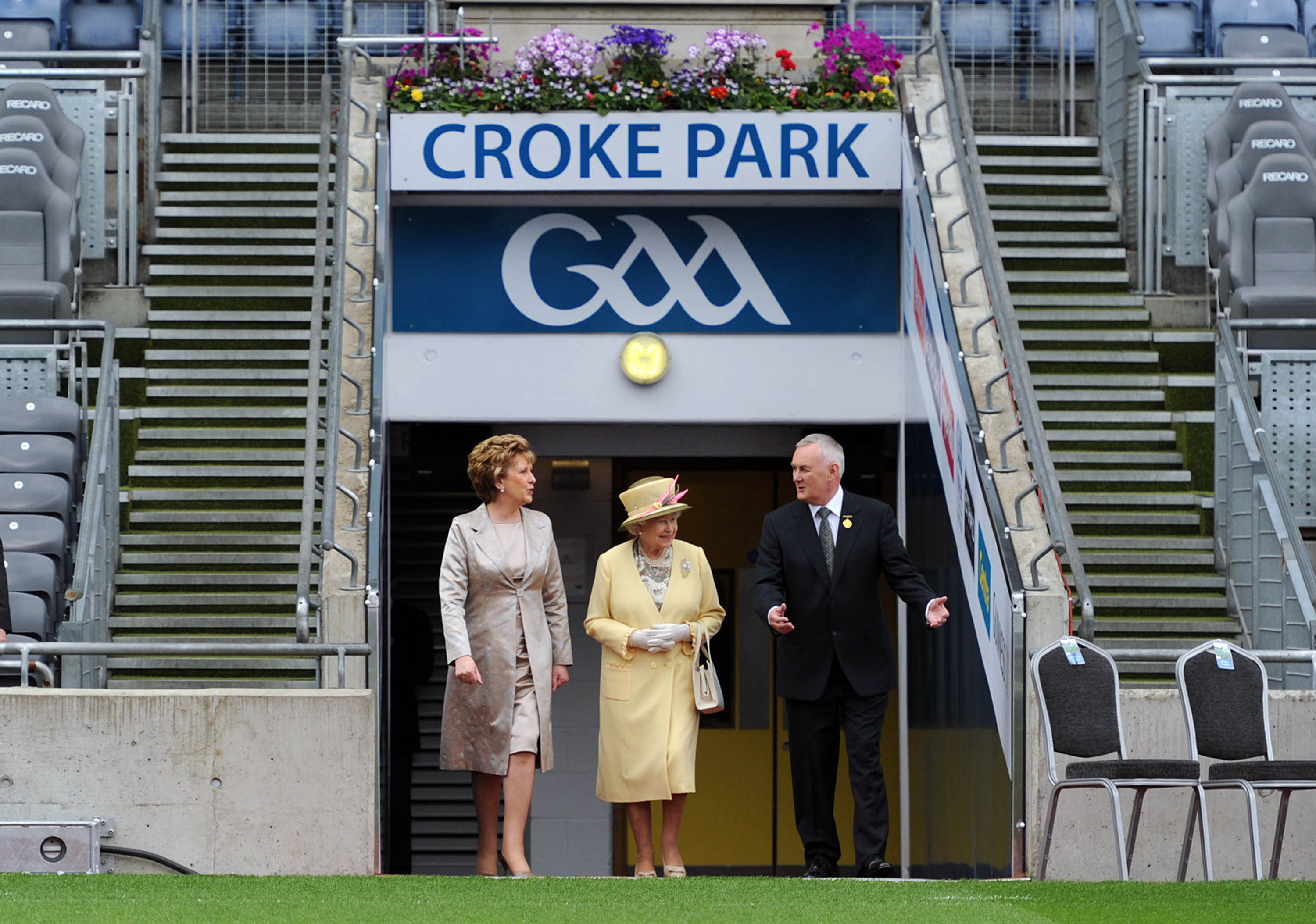
Irish President Mary McAleese, Queen Elizabeth II, and Christy Cooney arrive at Croke Park on May 18, 2011, in Dublin, Ireland, during the Queen’s visit to Ireland as the first British monarch to do so since 1911. Croke Park was the site of the Bloody Sunday violence in 1920, where British police forces fired on the crowd and killed 14 civilians. (Irish Government/Getty Images)
In all of this, she was, as Pope Benedict XVI said, “an inspiring example of dedication to duty and a commitment to maintaining the principles of freedom, justice and democracy, in keeping with a noble vision of the role of a Christian monarch.” She took that role seriously because she took her faith seriously. She was a Christian monarch crowned by an archbishop and blessed with holy oil, just as her ancestor Edward the Confessor—saint and monarch—was 1,500 years ago. But she saw herself first and foremost as a simple Christian.
In his new biography, Elizabeth: An Intimate Portrait, Gyles Brandreth writes that the Queen’s deep and abiding Christian faith was central to her personality:
Duty drove Elizabeth II, but it was her faith that sustained her. There was not a Christmas broadcast in which she did not speak of it—starting with her first, in 1952, when she was only twenty-six. “Pray for me,” she said, “that God may give me wisdom and strength to carry out the solemn promises I shall be making, and that I may faithfully serve Him and you, all the days of my life.”
She prayed every night on her knees by her bedside “not as a matter of form, but as a matter of belief,” Brandreth writes. We all saw the photos of her going to church every Sunday, but few of us realized that that was usually her second church service of the day. Her first was in her private chapel where she received Holy Communion.
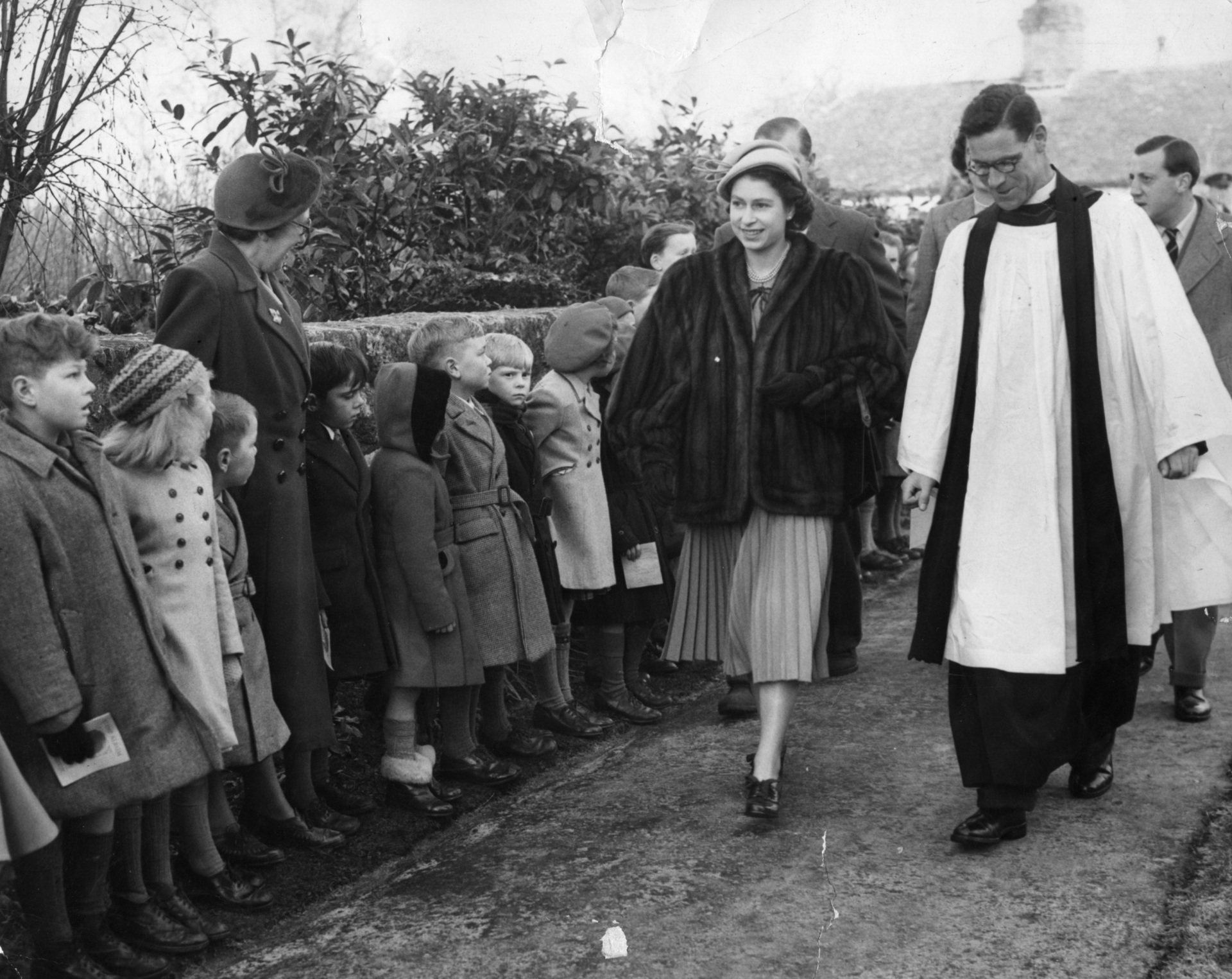
Queen Elizabeth II smiling at village children who greeted her as she arrived at Mersham Parish Church, accompanied by the Rector of Mersham, the Rev. J. Edinger, on December 7, 1952. (PA Images via Getty Images)

Queen Elizabeth II attends church at Hillington on January 17, 2016, in King’s Lynn, England. (Mark Cuthbert/UK Press via Getty Images)
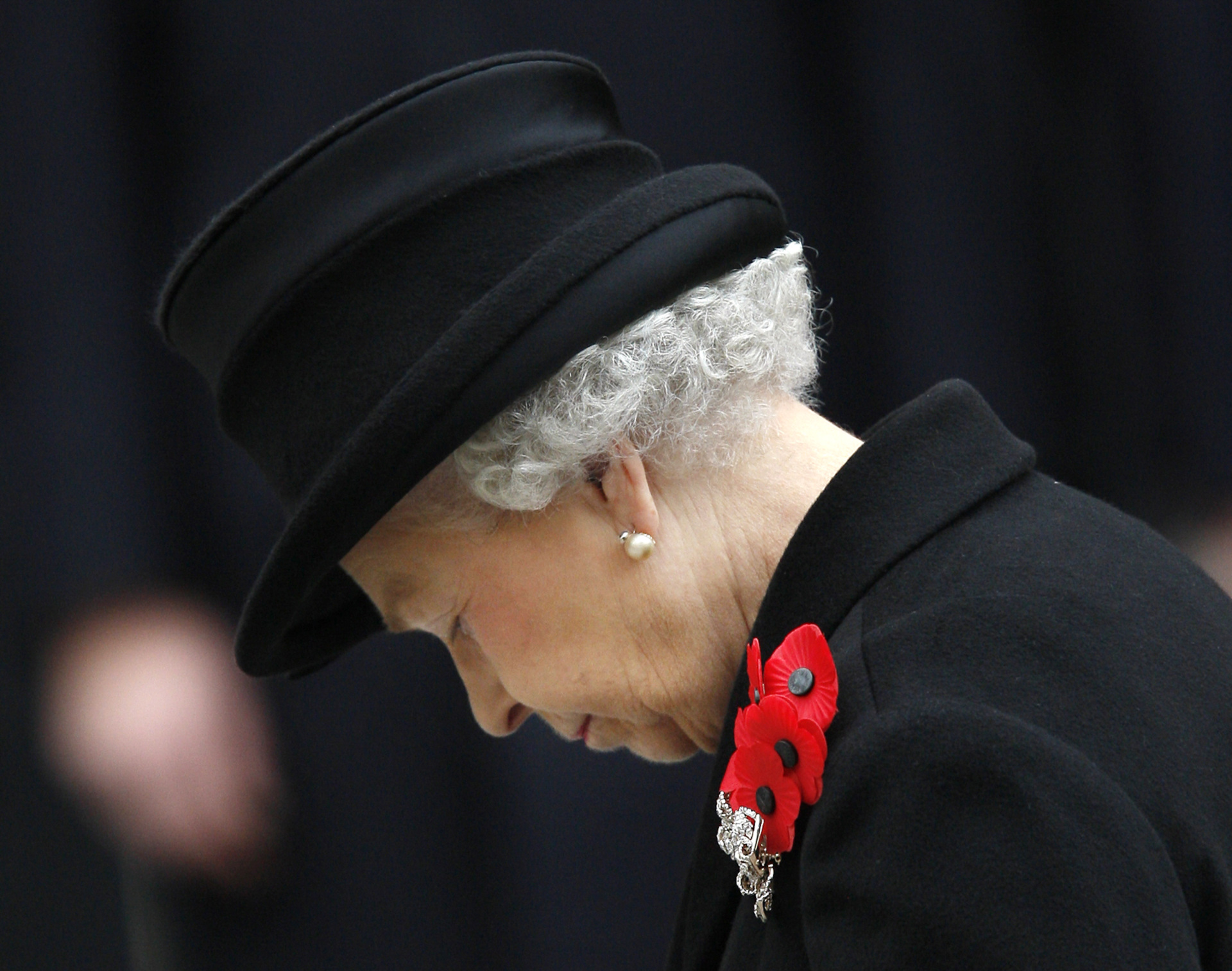
Queen Elizabeth II prays during the Remembrance Sunday service at The Cenotaph in Whitehall, London, on November 9, 2008. (ADRIAN DENNIS/AFP via Getty Images)
Of all the books written about her, there was only one that she officially endorsed with a foreword that she wrote herself. It was titled The Servant Queen and the King She Serves. It was, of course, a book about her Christian faith in Jesus Christ, the King she served. “I have been—and remain—very grateful to…God for His steadfast love. I have indeed seen His faithfulness,” she wrote in the foreword.
The title of a “servant” monarch—like her ancestor’s noble motto “I serve”—was one she embraced to the end. On the eve of her Platinum Jubilee, she signed her last letter to her people as simply “Your servant, Elizabeth R.”
It was her faith in God that grounded her service and gave her the grace and decency that the world so admired. “For me the teachings of Christ and my own personal accountability before God provide a framework in which I try to lead my life,” she said.
Indeed, her very existence was a reminder that Christianity is central to the government of her nation, which is quite literally a Christian kingdom. In his book The Spiritual Heart of the Monarchy, Ian Bradley writes, “Ultimately, monarchy points beyond itself to the majesty of God. It encourages the God-given human faculties of reverence, loyalty, and worship. It derives its true sanction and authority from above rather than from below.”
During the coronation ceremony, the Monarch is presented with the Holy Bible and told: “We present you with this Book, the most valuable thing that this world affords. Here is Wisdom; This is the royal Law; These are the lively Oracles of God.”
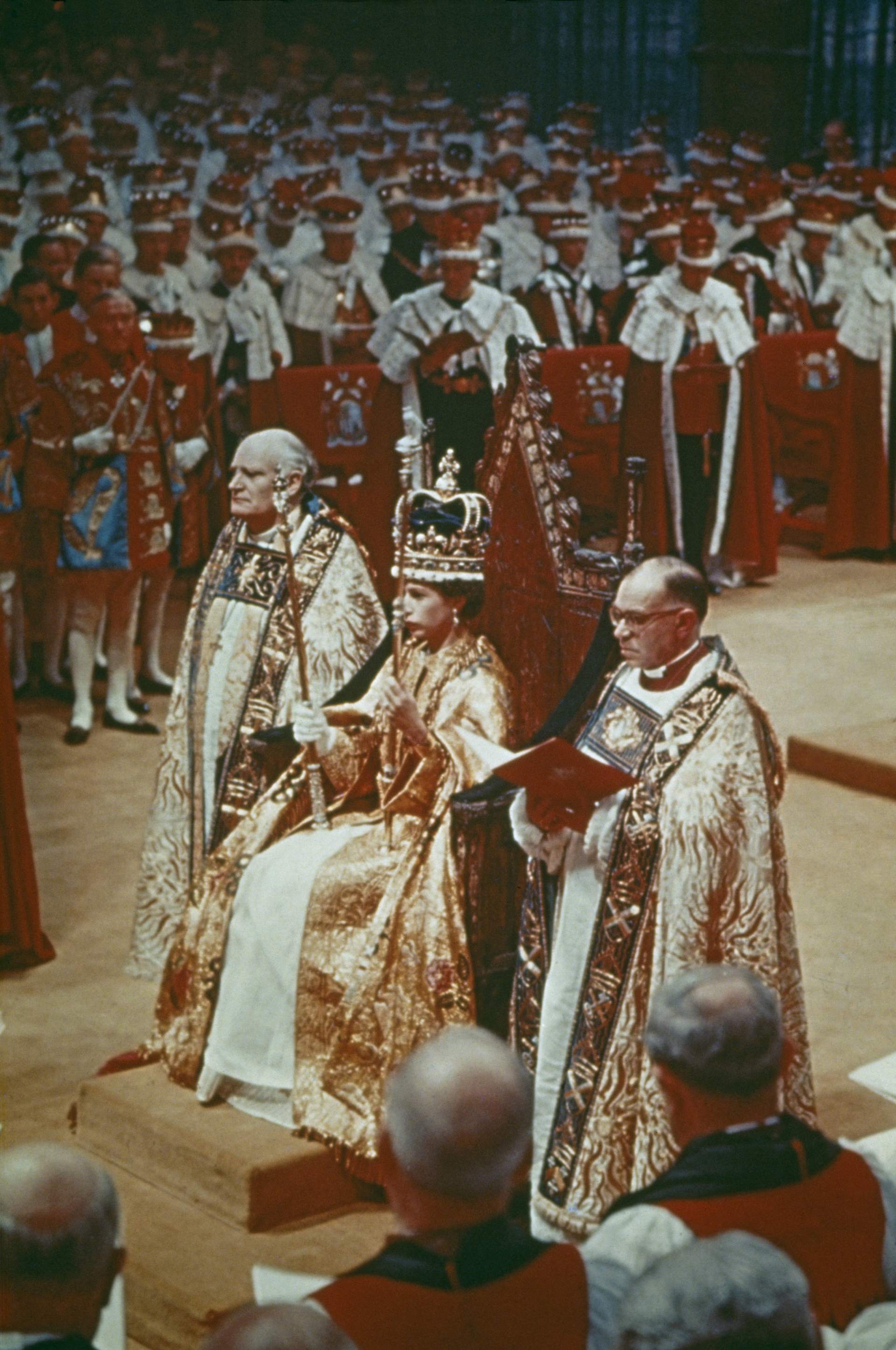
Queen Elizabeth II at her coronation ceremony in Westminster Abbey on June 2, 1953. (Hulton Archive/Getty Images)
“At her Coronation she was allowed behind the thick curtains which conceal the workings of Government from most of us, and saw with absolute clarity that Christian faith is the compact that makes our freedom and laws possible,” Peter Hitchens wrote in his obituary for the Queen. “Unless we believe that a higher power stands above us, we will in the end have either anarchy or tyranny. I suspect that she came to think this more strongly the longer she reigned, and the more she saw.”
As Hitchens noted, the Queen’s faith was “utterly central to everything she did—not least the way she almost entirely suppressed her own enjoyment and desires, for the sake of others. Her private life, as we once briefly discovered, was not one of grandeur and luxury but a modest affair of Tupperware and making do.”
The “Tupperware and making do” was one of her most remarkable qualities. Despite all the curtseying and the crowds and the “God save the Queens,” she was actually quite humble, modest, and famously frugal (hence, her use of old Tupperware). Her husband, Prince Philip the Duke of Edinburgh, told Brandreth, “It didn’t affect her at all. She never for a moment thought the cheering was for her personally. It’s for the position she holds—it’s for the role she fulfils, it’s because she’s Queen. That’s all. She knows that. Her head hasn’t been turned by being Queen—not at all. She’s quite normal.”
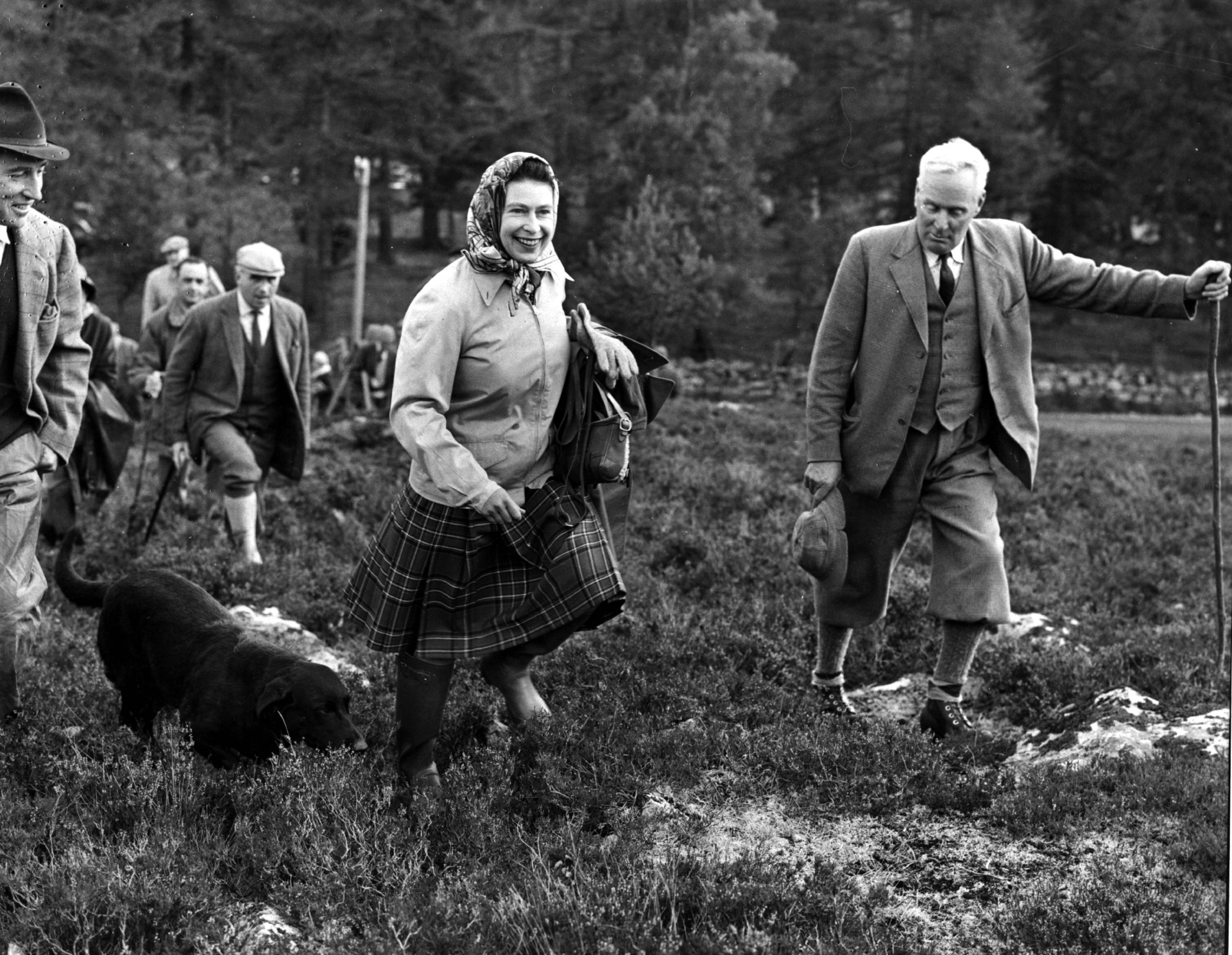
Queen Elizabeth II with her dog Wren at the Open Stake Retriever Trials at Balmoral, Scotland, on October 6, 1967. (Central Press/Getty Images)
Hitchens is right in saying that she “almost entirely suppressed her own enjoyment and desires” to fulfill her duty. I’m sure it wasn’t easy, and we know it wasn’t something she would have chosen for herself. As Winston Churchill said, Queen Elizabeth II “did not pass her childhood in any certain expectation of the Crown.” The role was thrust on her father and then on her because her uncle abdicated the throne to marry an American divorcee. (American divorcees have always been trouble for the House of Windsor).
It’s not natural or comfortable to be constantly on display or to suppress your own opinions—which is what she was required to do. She was aware that her every action would be scrutinized and recorded for posterity. Brandwreth tells a story about attending a Royal Variety Performance with the Queen and watching her smile and applaud with equal enthusiasm for every performer. When he asked her if she enjoyed each performance equally, she said, “Not really. But I like to be seen to be giving everybody the same amount of support. We are on television, after all. Their families might be watching.”
Now imagine a whole lifetime of “giving everybody the same amount of support” and always giving your full attention to even the dullest person in the room and never voicing your opinion about his dullness. She was on display for 96 years, and we never saw her lose her cool in public. Not once. Think about that. We’ve seen politicians, celebrities, and leaders of every sort lose their cool at least once. Her own son lost his cool the first week of his reign because of a leaky pen. But she was the epitome of keeping calm and carrying on with good humor. That kind of grace can only come by relying on the font of all Grace, and she was always reminding us of that fact in her Christmas addresses.
Left to her own recourse, she would have preferred an ordinary life as an English countrywoman of her class, raising her dogs and horses. That’s why it was so touching that in their last year together, she and her beloved husband were able to live together in relative quiet because everything was shut down due to the pandemic. When he retired from public life, the Duke of Edinburgh moved into a small house on the Queen’s Sandringham estate where he could escape from all the servants and pomp and live the quiet life he preferred. In those last months of his life, the Queen went to live with him in that “ungrand, unpretentious” bolthole that he “regarded as his home,” Brandreth writes. “It’s where he wanted to end his days, and she wanted to be with him to the end.”
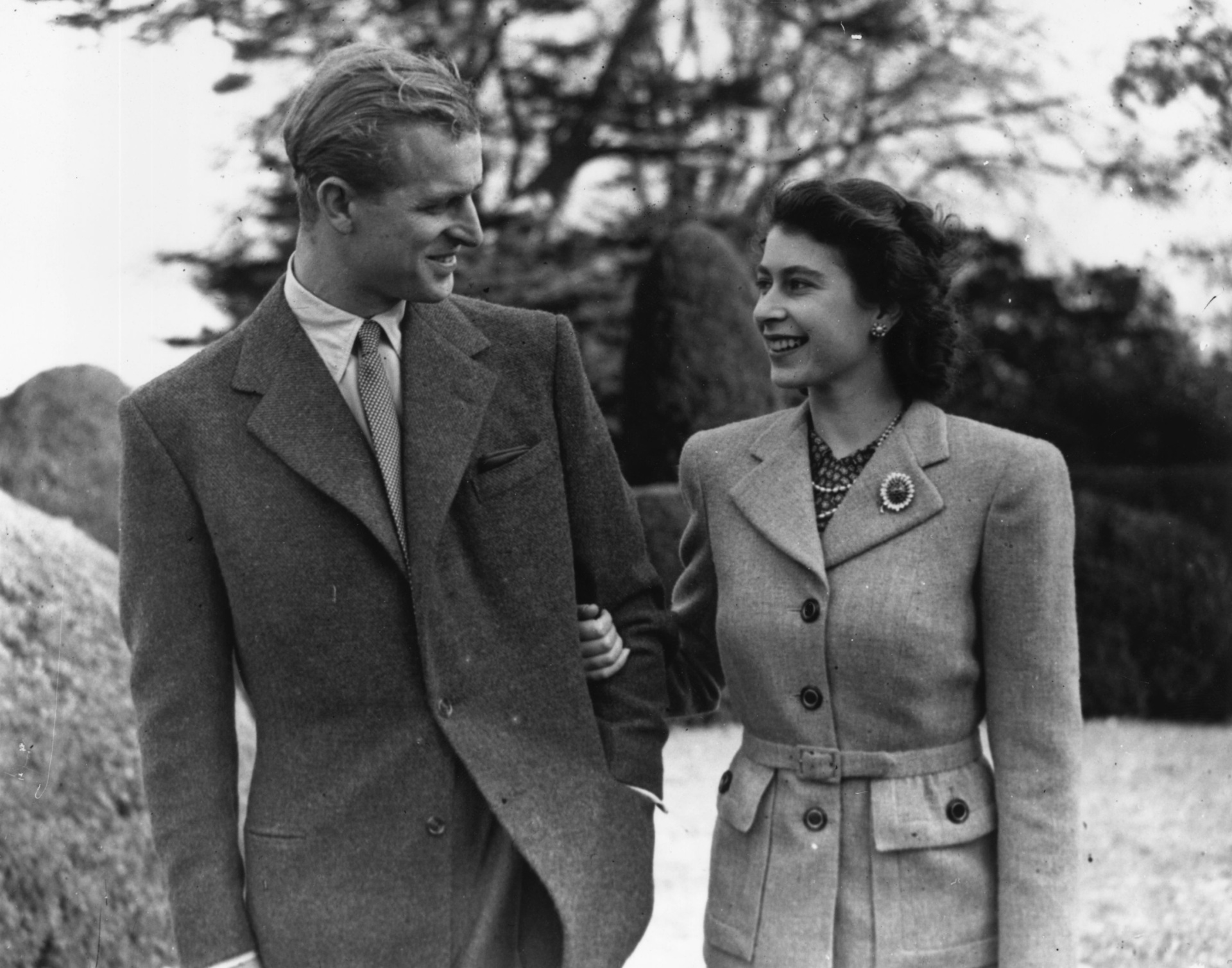
Princess Elizabeth and Prince Philip, Duke of Edinburgh enjoying a walk during their honeymoon at Broadlands, Romsey, Hampshire, on November 24, 1947. (Topical Press Agency/Hulton Archive/Getty Images)
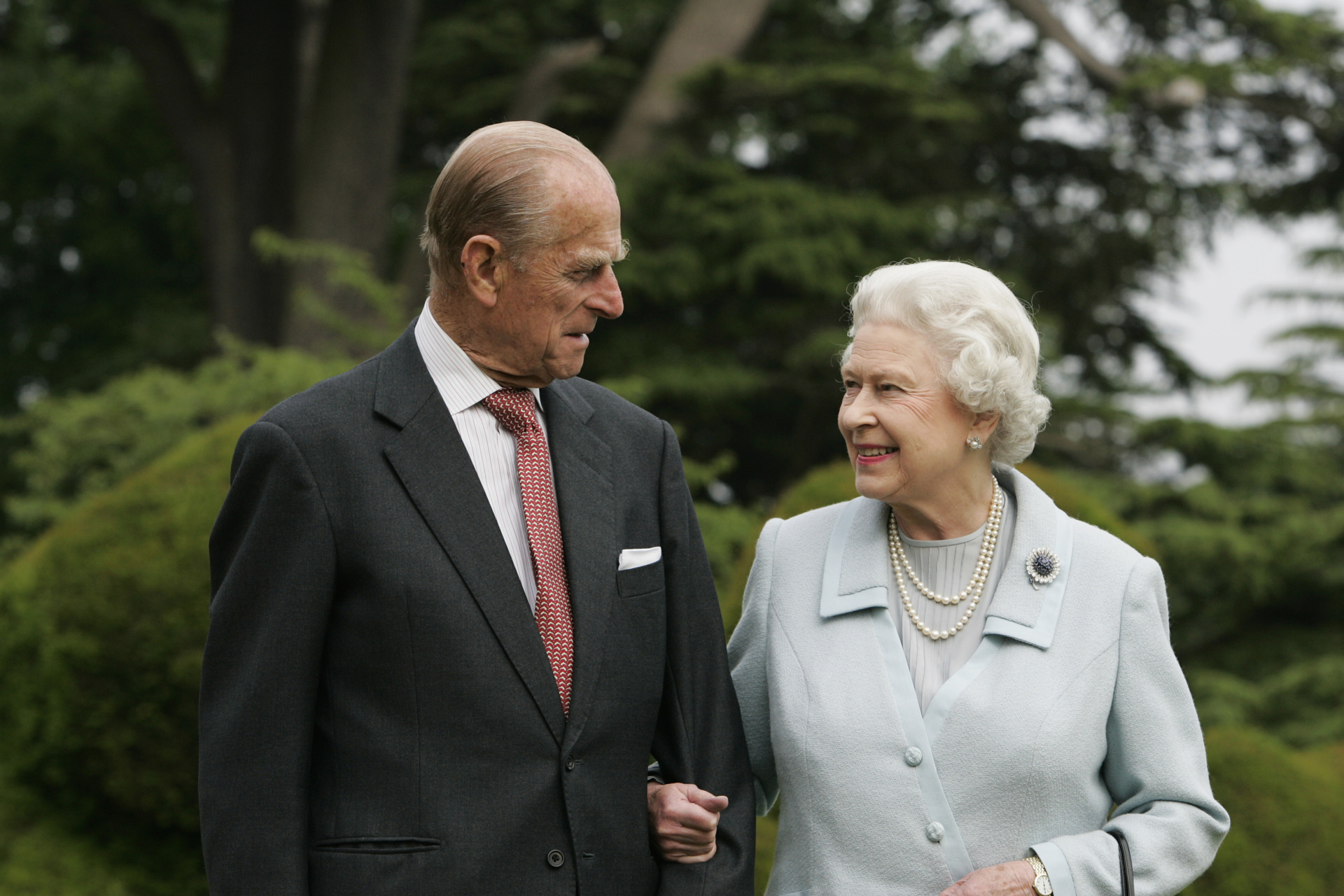
Queen Elizabeth II and Prince Philip, the Duke of Edinburgh visit Broadlands to mark their Diamond Wedding Anniversary on November 20, 2007. (Tim Graham/Getty Images)
She had been married to the Duke of Edinburgh for over 73 years, and she had loved him for even longer. He first caught her eye when she was a teenager accompanying her parents on a tour of the Royal Naval College, Dartmouth, where the 18-year-old Philip was a cadet. He made quite an impression when the royal yacht departed and the cadets followed behind it in rowboats to see the King off. One cadet kept rowing behind the royal yacht farther than all the others—so much so that the King said, “Who is that young fool? Tell him to go back.” That was Prince Philip out-rowing all of his classmates to impress his future wife. Is it any wonder that she loved him for over seven decades? He was her dutiful “liege man of life and limb” who, in her own words, was her “strength and stay” and someone who could always make her laugh, which apparently was the secret to their long marital success. “That mischievous, enquiring twinkle was as bright at the end as when I first set eyes on him,” she said.
In the end, he rowed out ahead of her, waiting for her to follow 17 months later. On the day she died, a double rainbow appeared over Buckingham Palace, which many saw as a sign that these two souls were reunited.
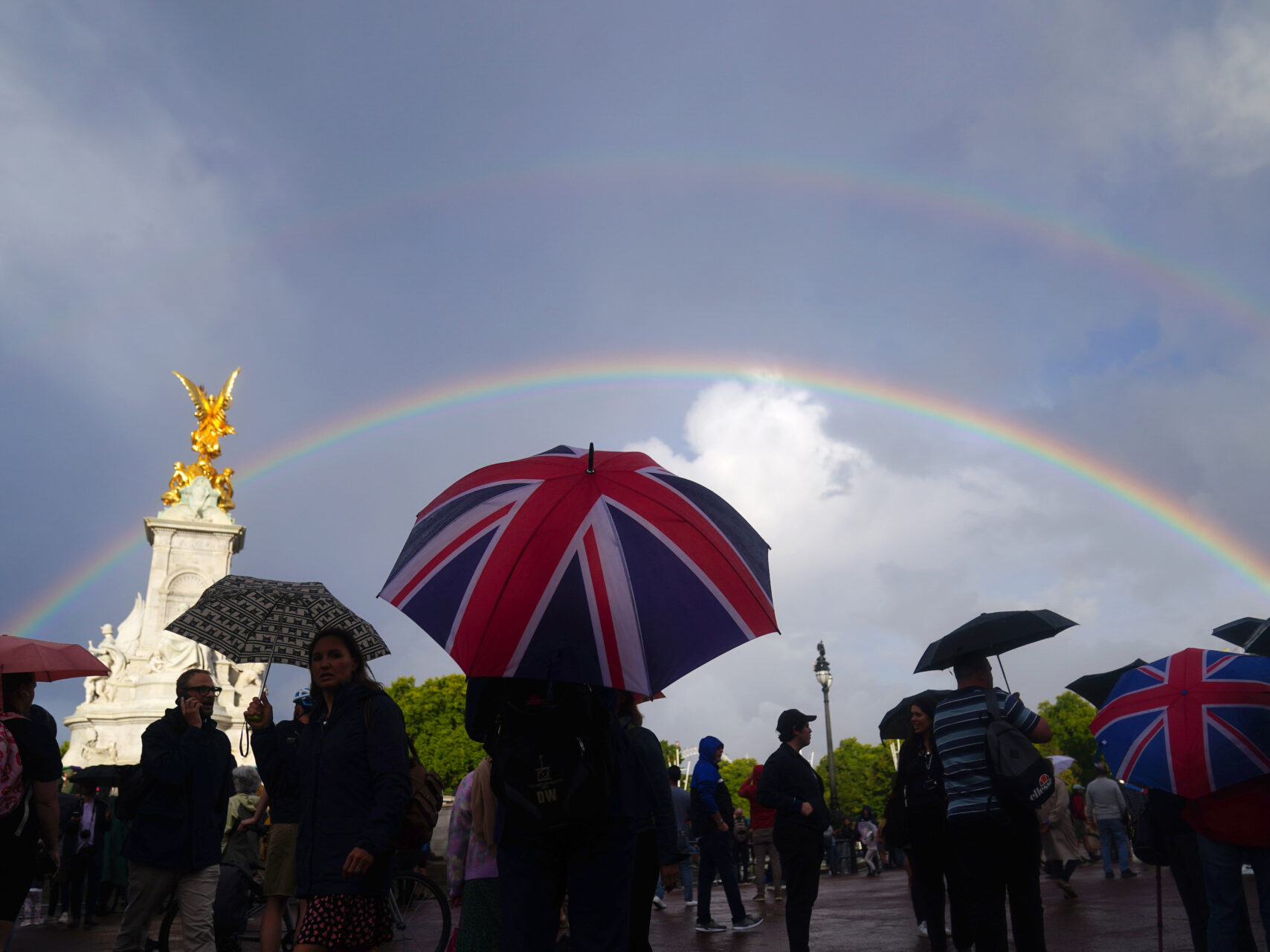
A double rainbow is seen over Buckingham Palace on September 8, 2022, after the the Queen’s passing. (Victoria Jones/PA Images via Getty Images)
We now know that during the last year of her life, as she mourned the loss of her husband, the Queen was suffering from cancer and was personally “devastated” by her grandson and his wife’s selfish money-making endeavors aimed at smearing her family.
It’s unfortunate for everyone that the Duke and Duchess of Netflix didn’t heed their grandfather’s advice before they ditched their duty and trashed their family for money, as Brandreth writes:
The Duke of Edinburgh was not pleased, nor did he believe that Harry and Meghan were doing the right thing, either for the country or for themselves. “It’s a big mistake to think about yourself,” he told me, more than once. “No one is interested in you in the long run. Don’t court popularity. It doesn’t last. Remember that the attention comes because of the position you are privileged to hold, not because of who you are. If you think it’s all about you, you’ll never be happy.”
That self-effacing philosophy—which the Queen shared with her husband—is precisely why her popularity outlasted any celebrity’s or politician’s. It’s wonderfully ironic that in an age when “democracy” has never been more rhapsodized (we’re always fighting wars to spread it!) or more malfunctioning (we’re always told it’s in peril!) this unelected hereditary monarch had an approval rating that democratically elected politicians could only dream of.
The secret of her success wasn’t anything a political spin doctor could replicate. It came from within—from her obedience to the coronation vows she made to God to serve her people.
“I cannot lead you into battle,” she said in her first televised Christmas address. “I do not give you laws or administer justice, but I can do something else, I can give you my heart and my devotion to these old islands and to all the peoples of our brotherhood of nations.”
History may not remember her as Britain’s greatest monarch. Unlike her illustrious ancestors, she never vanquished an enemy on the field of battle, or defeated an invading armada, or conquered an empire. She might not have been the most powerful of her predecessors, but she was the most steadfast. Her 70-year reign left an indelible mark on her era, even if it does not bear her name.
That’s why the whole world tuned in to watch the Archbishop of Canterbury intone the words of the ancient funeral rite: “Go forth, O Christian soul, from this world.”
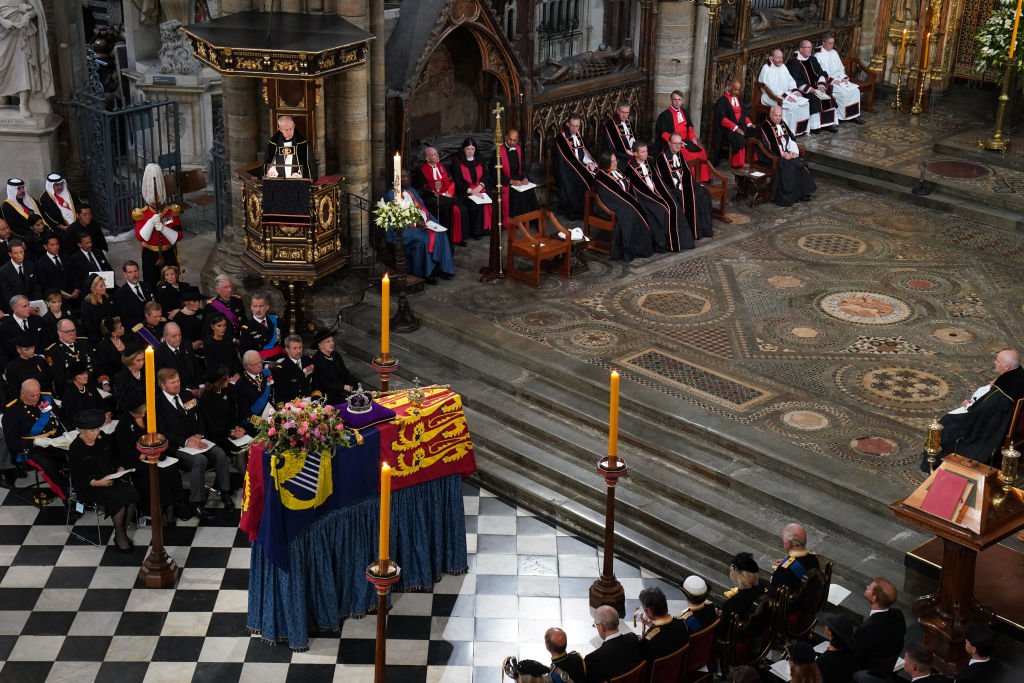
(Gareth Fuller – WPA Pool/Getty Images)
Rebecca Mansour is Senior Editor-at-Large for Breitbart News. Follow her on Twitter at @RAMansour.
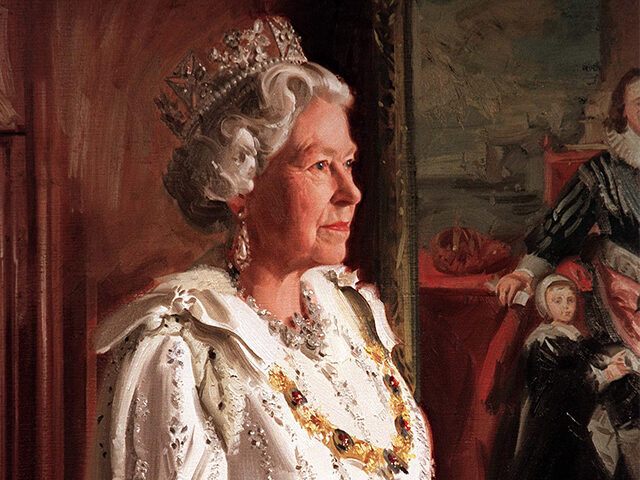
COMMENTS
Please let us know if you're having issues with commenting.